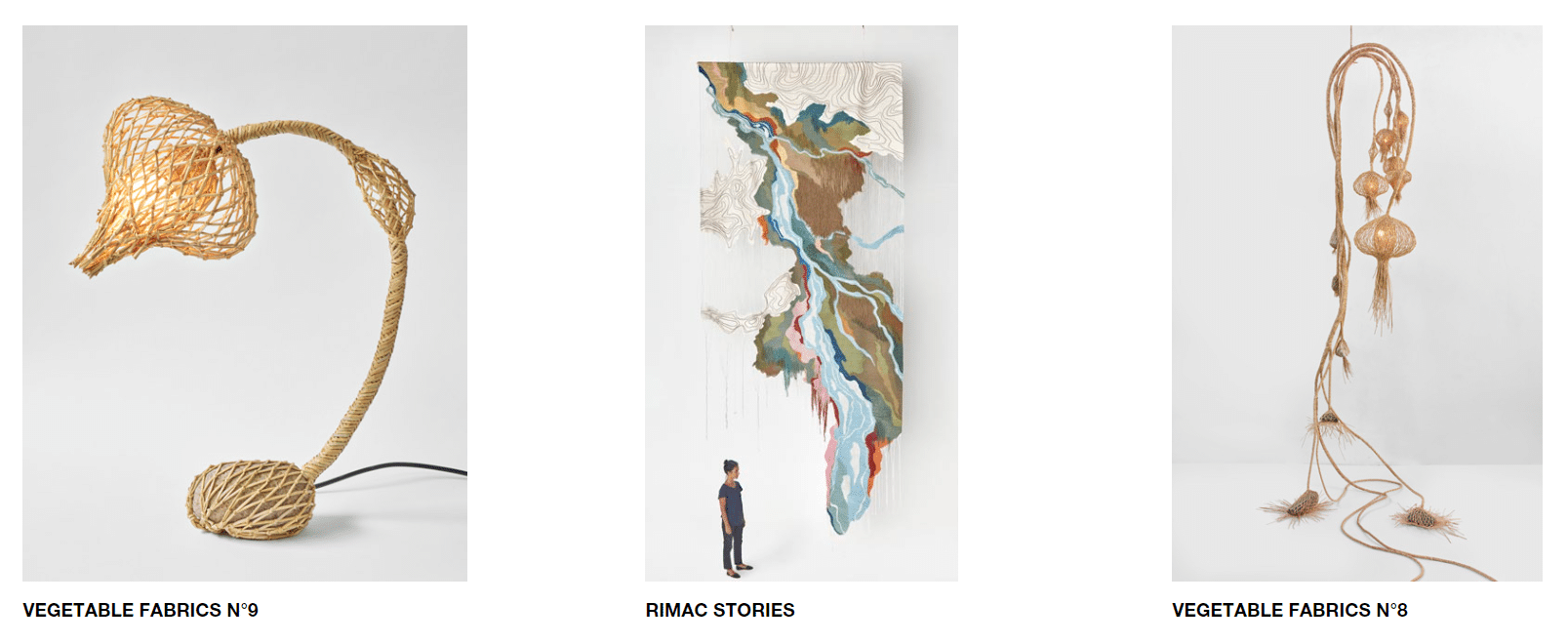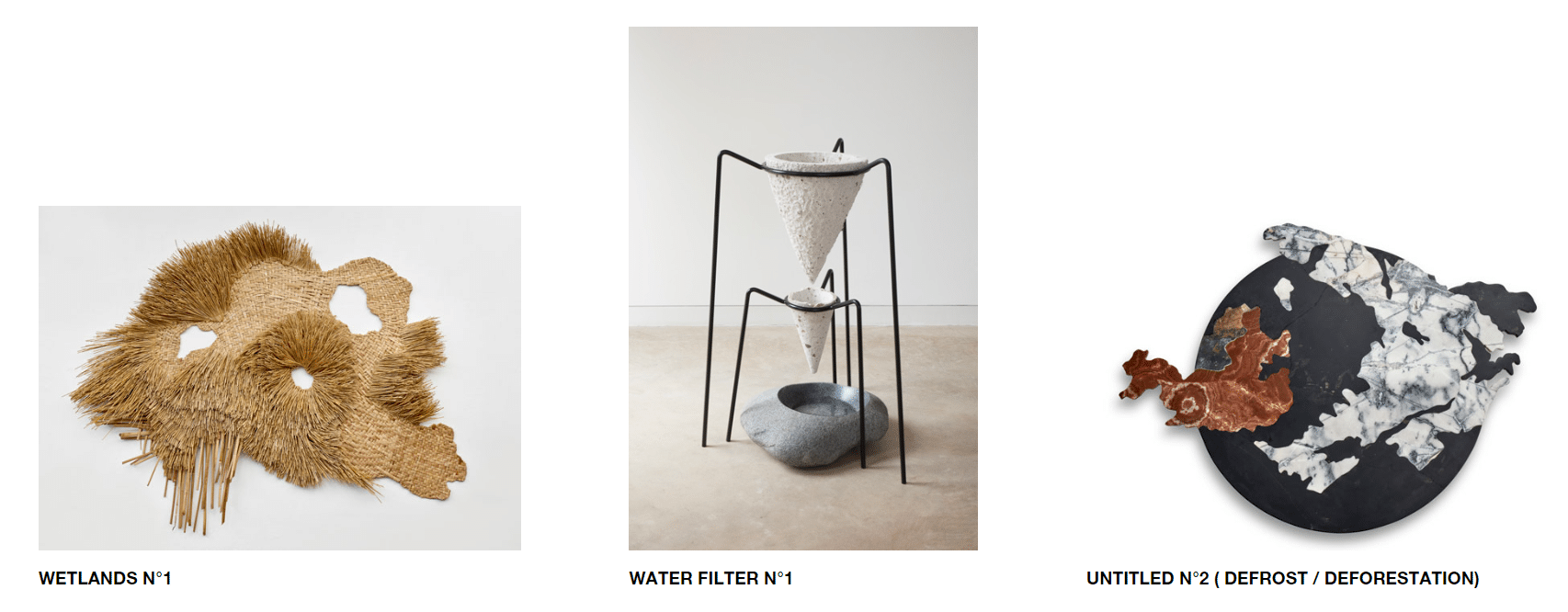Category: Design
2
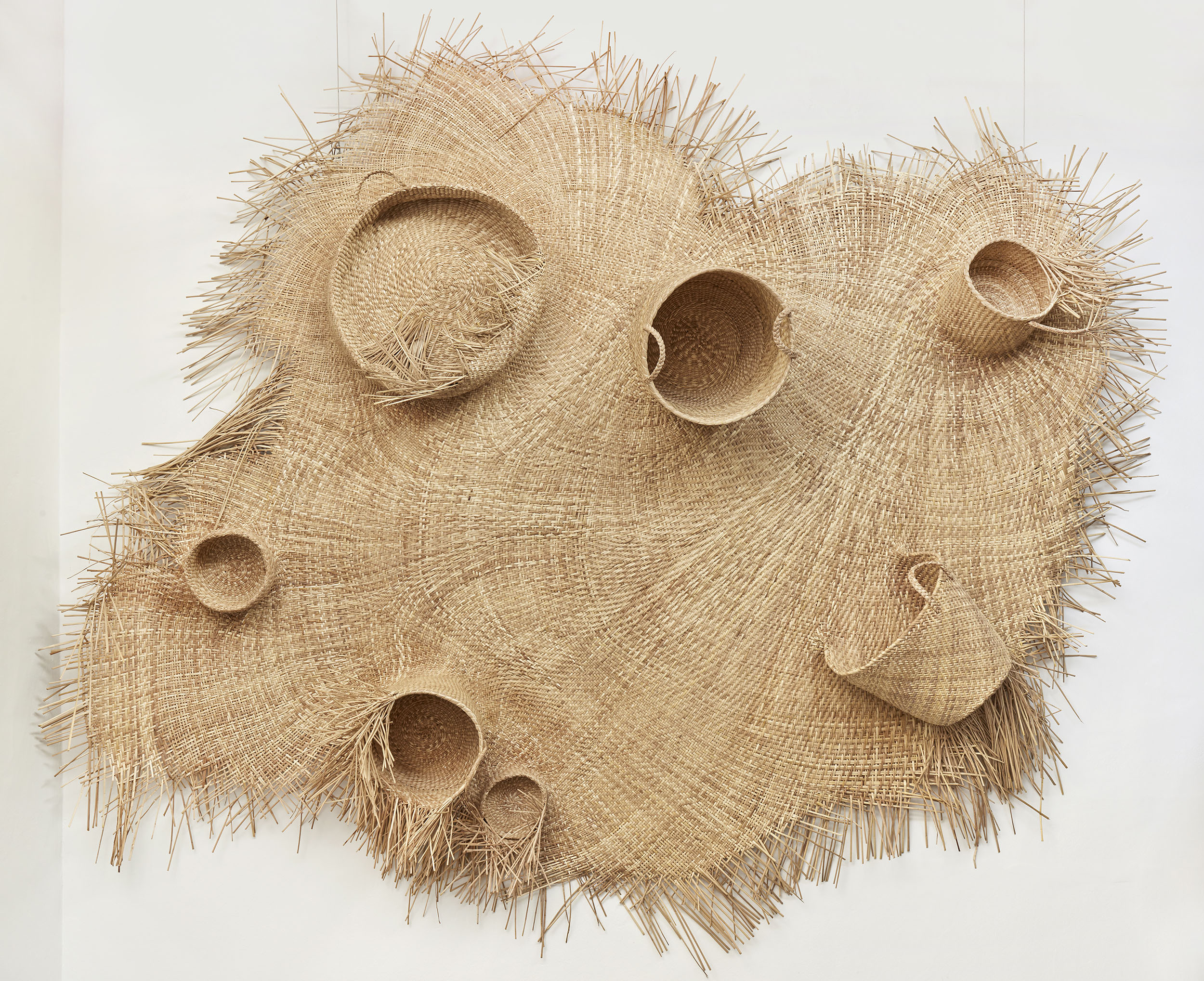
STUDIO RF AT RURAQ MAKI, HECHO A MANO
Design and art pieces that integrate traditional and contemporary, derived from peruvian geological and biological diversity explorations, will be presented.
This month we will take part in December 2019 edition of Ruraq Maki, hecho a mano, an exhibition and sale promoted by the Ministry of Culture of Perú, as part of the Co-creativity section, dedicated to collaboration between traditional artists and designers.
We’ll introduce pieces made in collaboration with Roberto Román, a specialist in stone carving, and pieces developed together with the brothers Samuel, David and Eber Goicochea, specialists in fabric with reed and cattail. Rafael Freyre, creative director of Studio RF, has collaborated with these traditional artists in different projects, among them stone pieces for Virgilio Martínez restaurant Central, and reed and cattail fabrics for “Ecosistema del Agua” (Ecosystem of Water) exhibition with which he won MAC Lima 2019 National Art and Innovation Award together with the visual artist Ana Teresa Barboza.
It will be an opportunity to show the great potential yet to explore of collaborative work between traditional artists and contemporary artists and designers. In the search for creating continuity between landscapes, local materials and their transformation processes, we have found special affinity with the intimate relationship between traditional art and the environment where it develops.
We distance our pieces from generic manufacturing processes. We are interested in exploring how ideas relate to organic matter and its transformation processes, as well as the elimination of established hierarchies between intellectual and manual processes. Thus, it is possible to create new collective imaginary.
The event will take place from December 13 to 22, on the third level of Kuélap Tower (main headquarters of the Ministry of Culture) from 10am to 8pm.
About the participants:
Studio Rafael Freyre (Lima, Perú)
Studio RF is a multidisciplinary research and creation space where architecture, visual arts, performing arts and design projects converge. His work is based on the natural and cultural diversity of the Peruvian territory; They experiment and design based on local materials and techniques from the coast, the Andes and the Amazon, with their sustainability as a priority.
Roberto Román (Lima, Perú)
A specialist in artisanal stone works. He began his specialization in 1983, working for a marble company after finishing secondary schooling. He comes from a family of dedicated stonemasons; his grandfather cut sillar blocks in Ayacucho, and his father hewed marble for a marble company in Chiclayo. Presently, he directs a team of stone workers at his workshop in Ate.
Samuel, David and Eber Goicochea (Lima, Perú)
Traditional artists specialized in fabrics with vegetable fiber. Their relationship with fabrics began through his family, who are dedicated to weaving with matara and totora. They experiment in the family’s workshop with different types of fibers and knitting techniques. Nowadays, Goicochea family share a work space where the weave purses, carpets and utensils made of reed and cattail. They work both independently and collaboratively.
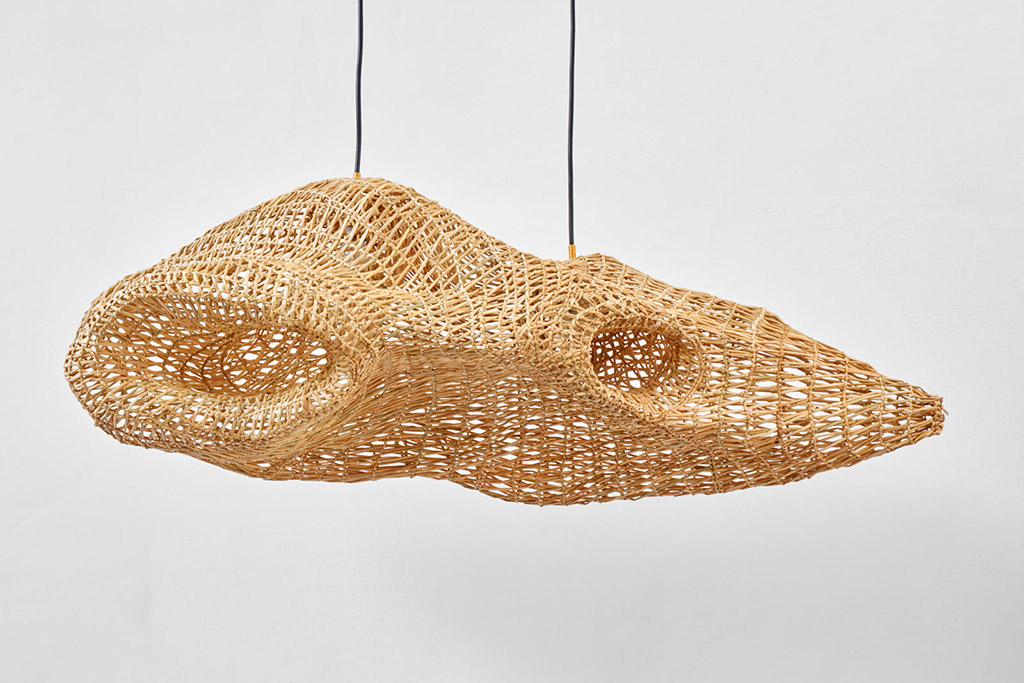
Vegetable Fabrics
Vegetable Fabrics brings us closer to the processes of growth and transformation of the plant organism, posing a relationship with them from their continuity with the tissues made by the human being. In tropical latitudes, the climate allows the plant world to manifest itself in an exuberant way and to develop a great diversity of species and ecosystems. The cultures that inhabited our territory created a close link with the coastal wetland plants, such as Schoenoplectus americanus or Juncus Cyperaceae. From their identification with the plant world, they developed cosmovisions and artisan techniques that became evident in ritual objects. Vegetable Fabrics develops pieces that relate the internal structures of plants with the manual processes of weaving and transformation of the fibers.
CONCEPT AND DESIGN
ESTUDIO RF
MAKER
DAVID GOICOCHEA
MATERIAL
REED FROM HUACHO WETLANDS
PHOTOGRAPHY
JUAN PABLO MURRUGARA

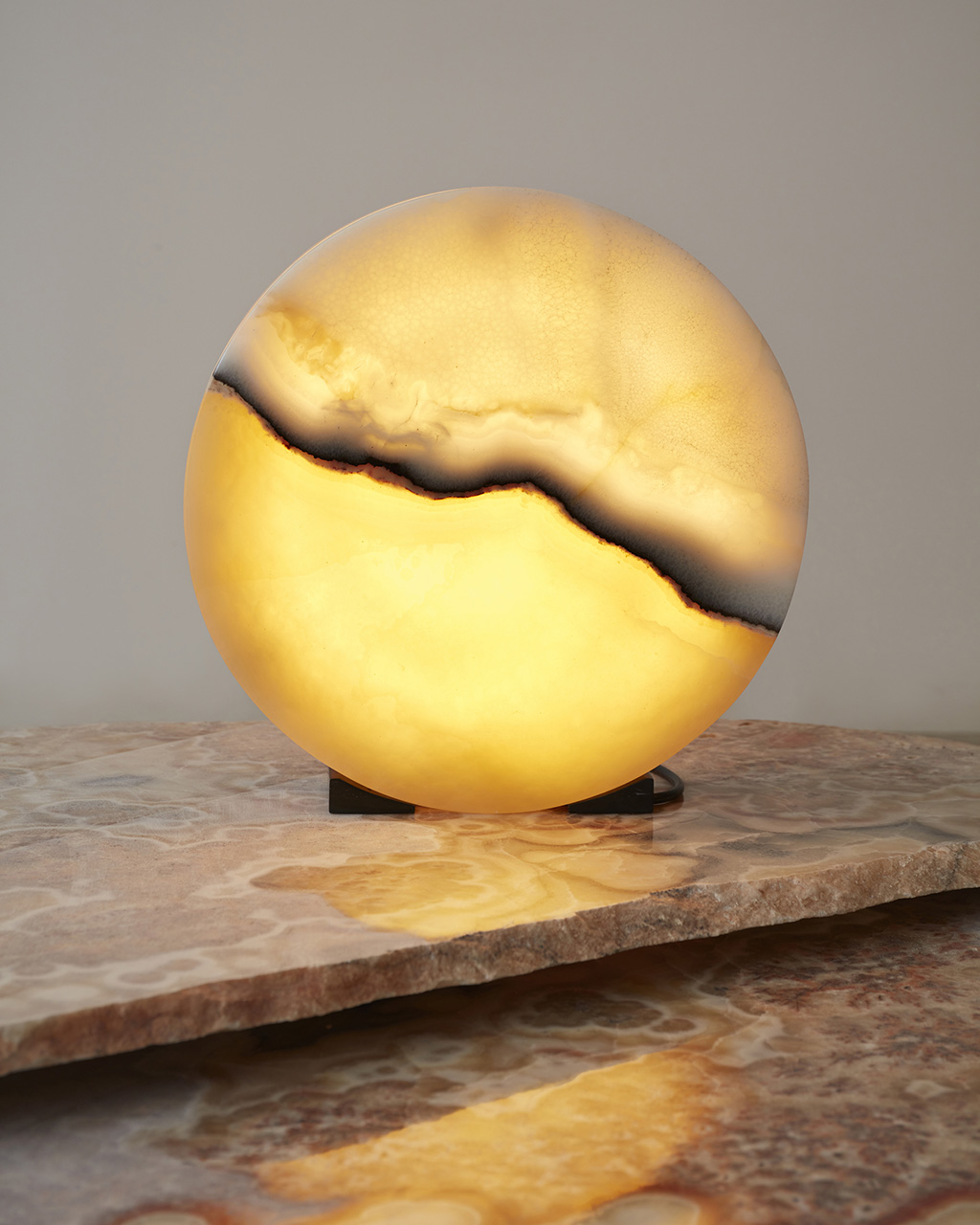
Lámpara de onix de Ayacucho. Lamp made of onyx from Ayacucho.
Light objects
Objects of Light have a starting point in the origin and materiality of Calcium Onyx, a cryptocrystalline variety silica with translucent properties. This stone comes from the Urihuana quarry, located 10 km northwest of the city of Cangallo, in Ayacucho. It is a region located on the eastern slope of the Andes, a well known cultural nucleus in Peru, dating back to the Wari culture (500-1100), that developed a very important regional cultural identity of its own, manifested in different expressions such as alabaster carving, pottery, textiles, music and dance. Ayacucho was also the region that suffered the most violence during the internal war of the 80s, between armed groups of terrorists and the government.
The light projected through the mineral transforms the space and invites us to introspection, to a moment of silence, of relationship with the experience of luminosity as when we observe the sun or a star. Through the piece we experience the passage from the material to the immaterial, inevitably also going back to the memory of the place of origin, Ayacucho. However, the light projected from the interior speaks to us of a latent energy of transformation in the future.
CONCEPT AND DESIGN
ESTUDIO RF
STONE WORK
ROBERTO ROMAN
MATERIAL
ONYX AND OTHER STONES FROM VARIOUS
GEOLOGICAL STRATA OF THE ANDES
PHOTOGRAPHY
JUAN PABLO MURRUGARA
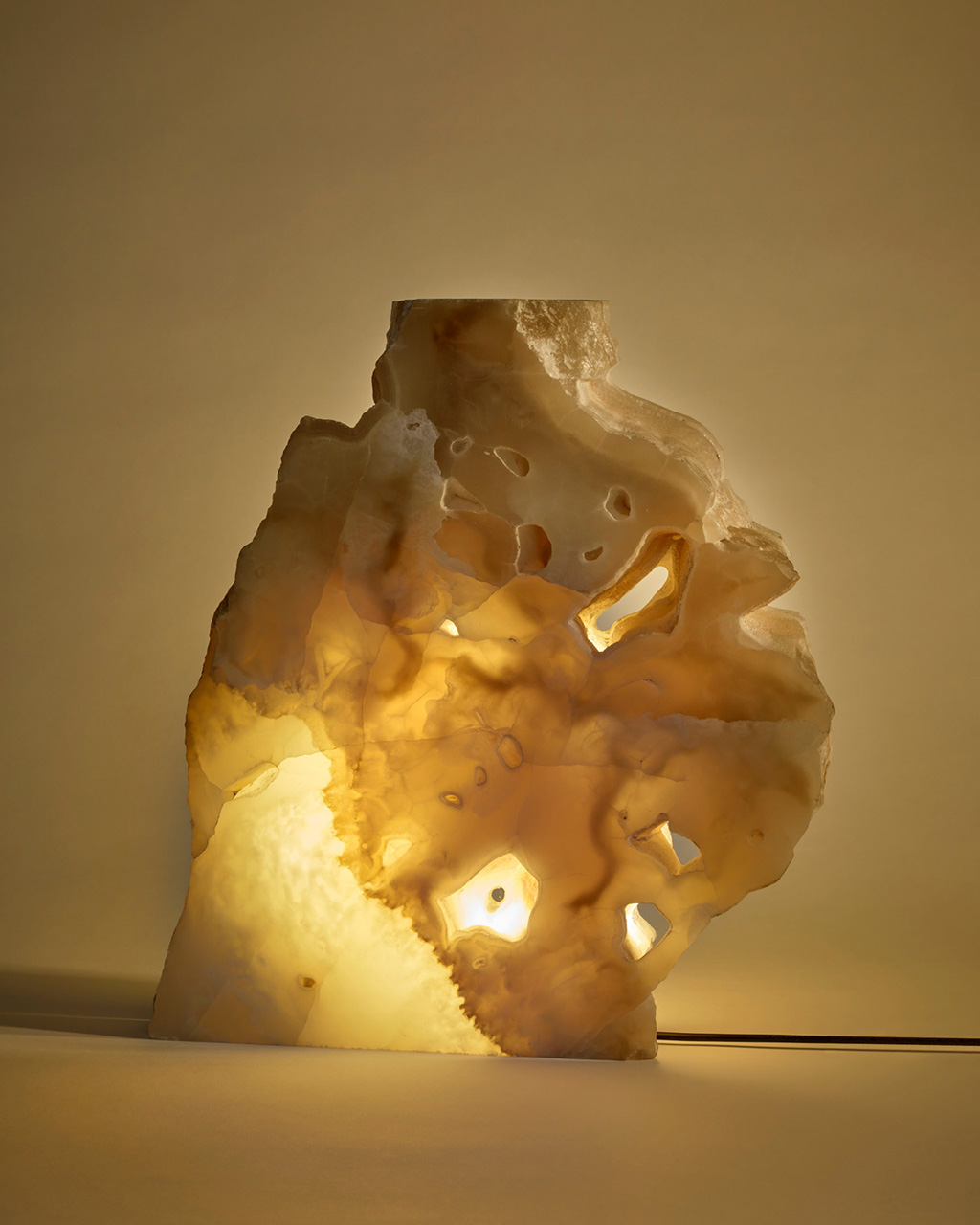
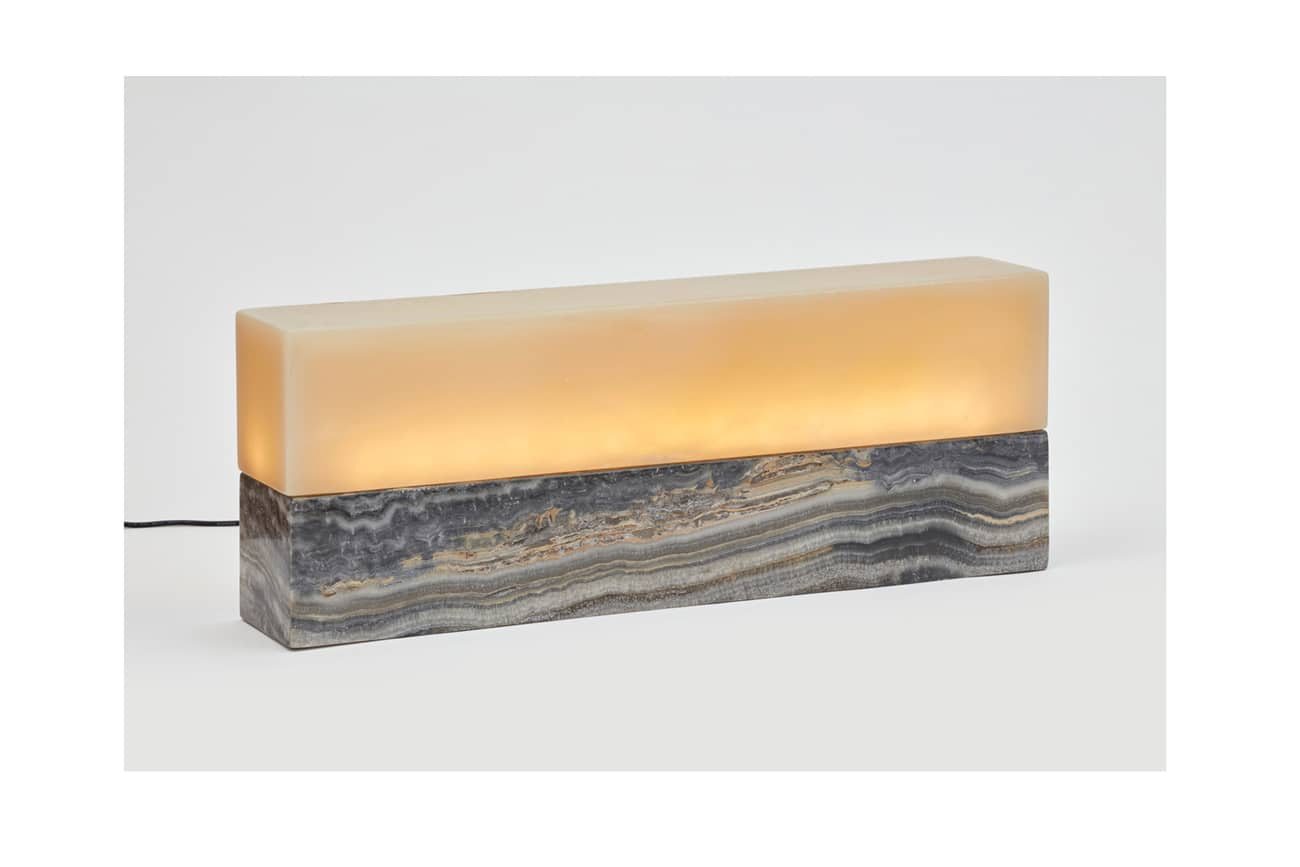
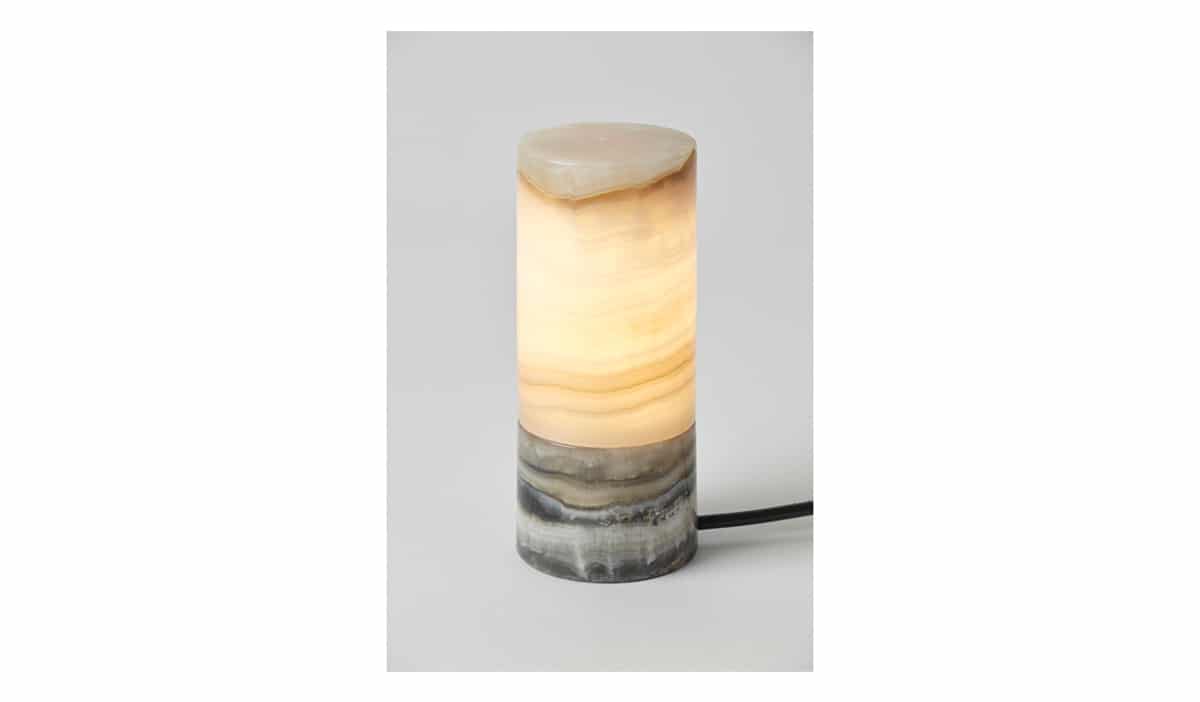
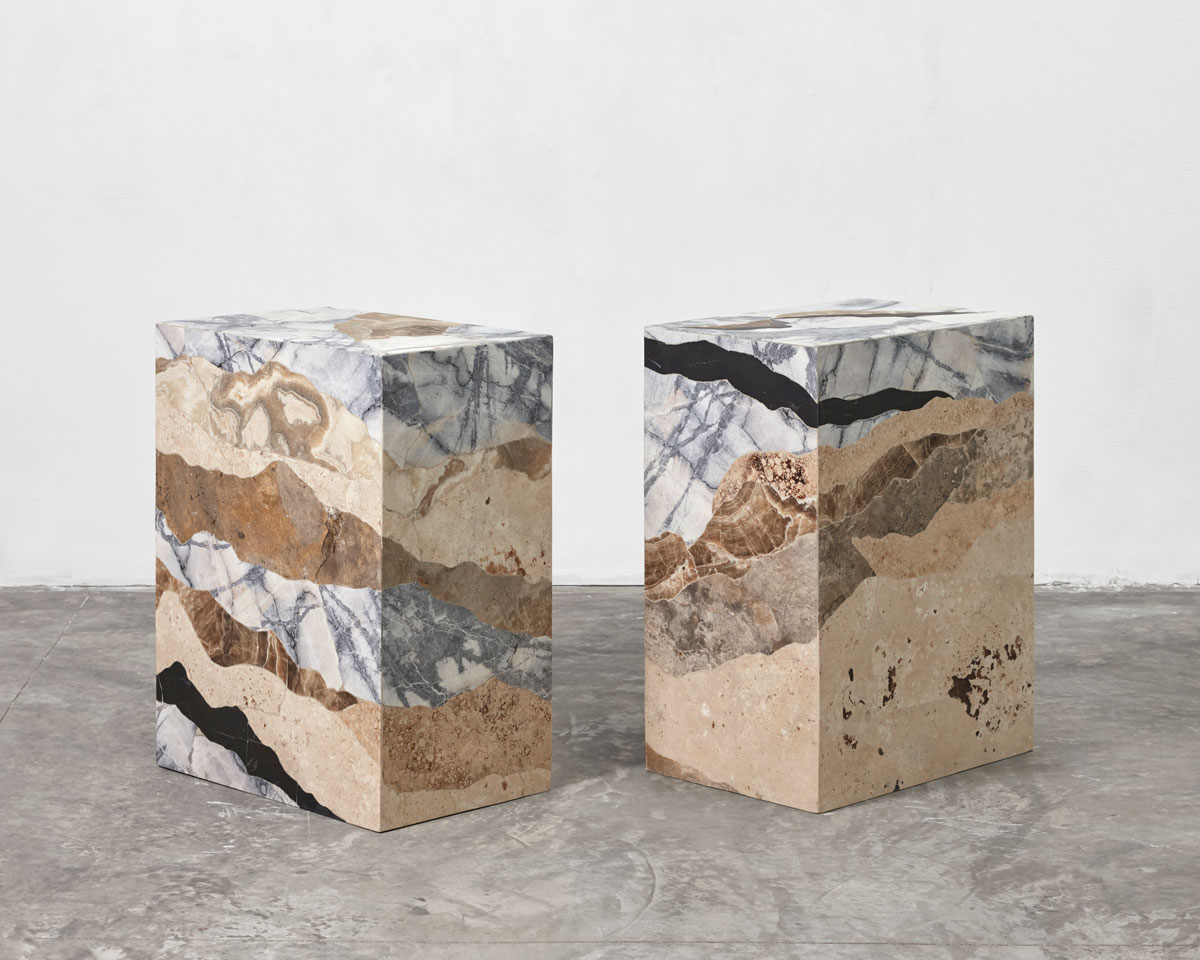
Strata
ADA
ADA is a space that brings together works that explore the diversity of landscapes, technologies and local materials, investigating the continuity that exists between natural environments and cultural creations.
ADA digital portfolio brings together interdisciplinar artwork developed by Studio RF that reflects critically on our contemporary habitat, providing a space for conversation between visual and scenic arts, craft, design, architecture and other disciplines beyond art.
Based on the relationship between natural environment, space, material and body, the pieces are focused on the exploration of natural and cultural diversity, as well as sustainable collaborative small scale production with healthy local materials. ADA aims to foster social and environmental change towards a new heterogeneous and dynamic equilibrium, based on collective engagement, local diversity and decentralised power relations. A starting point in ADA is critical reflection around the contemporary objects and spaces that shape our daily activities. Most of them are the result of generic processes of industrialization and globalization of urban life, disarticulated from cultural, social and territorial specificity.
ADA questions what is established today as contemporary or modern. Most of our normalized behaviours are based only on occidental – linear, logos male centric – or neoliberal individual perspectives. ADA fosters instead to create critical and collaborative projects connecting and articulating diverse artists, artisans, communities, thinkers and creators that expand the field of art/design/architecture through experimentation. Materiality and corporality approaches open our vision to understand humans and nonhumans organisms interactions, establishing new respectful relations and recovering old handcraft traditions and rituals of embodiment as a continuum between culture and nature as well as body and territory.
COLLABORATORS
STONE ARTIST
ROBERTO ROMAN
TEXTILE ARTIST
ELVIA PAUCAR
BASKETRY ARTISTS
DAVID, EBER Y SAMUEL GOICOCHEA
INDUSTRIAL DESIGNER
VASCO ÁVILA
VISUAL ARTIST
ANA BARBOZA
MASTER CARPENTERS
VALERIO COLQUE
LUIS ALBERTO MUCHA
LAMP CRAFTSMAN
RUBEN ESCALANTE
MECANIC ENGINEER
JESUS MUÑOZ
LIGHT ARTIST
MARCO ANTONIO ATALAYA
ARCHITECT
MARI RETAMOZO
ARCHITECT & ARTIST
RAFAEL FREYRE

Serie Tejidos Vegetales. Vegetable Fabrics Series.
